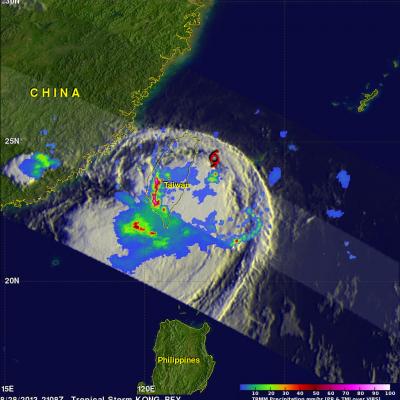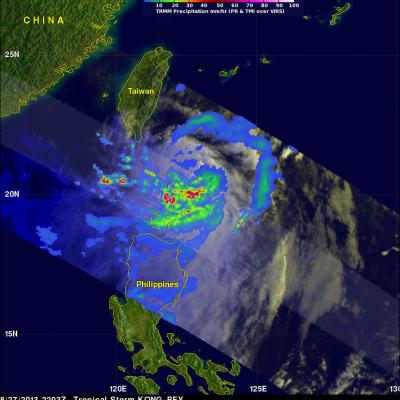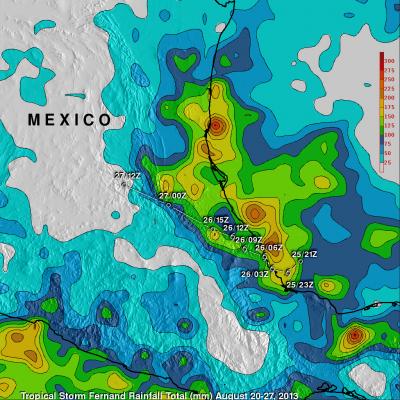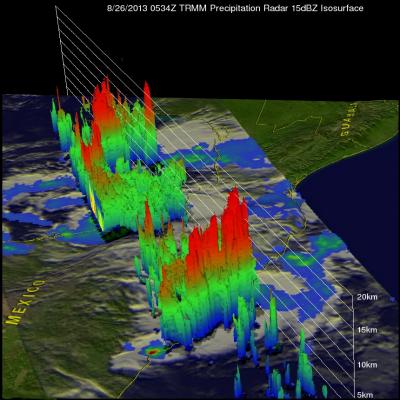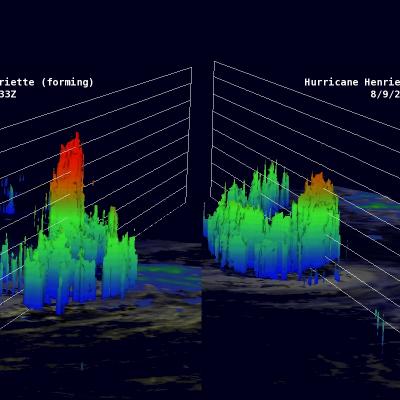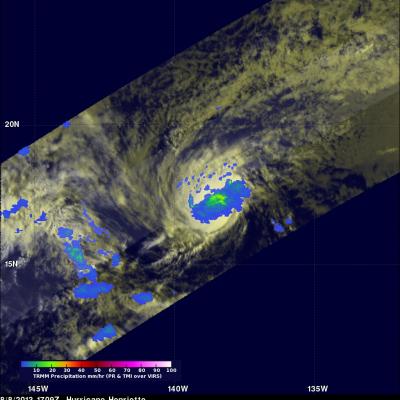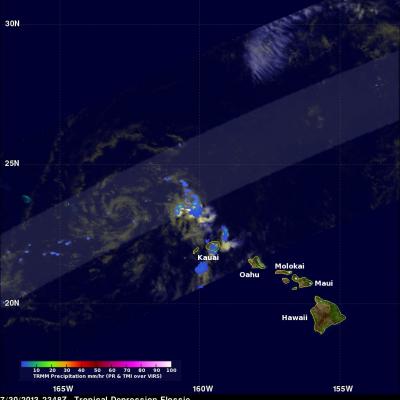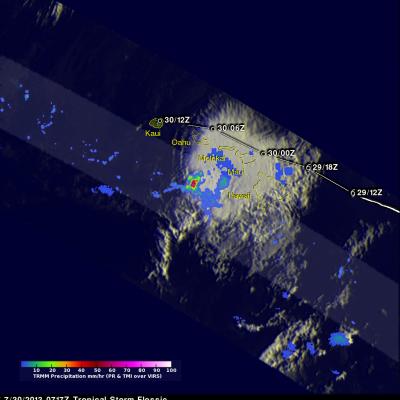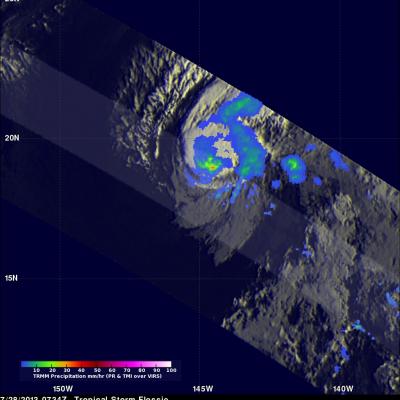Tropical Storm Toraji Adds To Japan's Rainfall
Tropical storm Toraji quickly followed tropical storm Kong-rey and has started to again saturate Japan with flooding rainfall. The TRMM satellite flew over Toraji on September 3, 2013 at 1220 UTC. Rainfall estimates using data collected by TRMM's Microwave Imager (TMI) and Precipitation Radar (PR) instruments with this orbit are displayed in the left image. TRMM PR measured rain falling at a rate of 133 mm/hr (~5.2 inches) in an area just north of Toraji's center of circulation. The image on the right shows a 3-D view from the south of this area using TRMM PR data.



